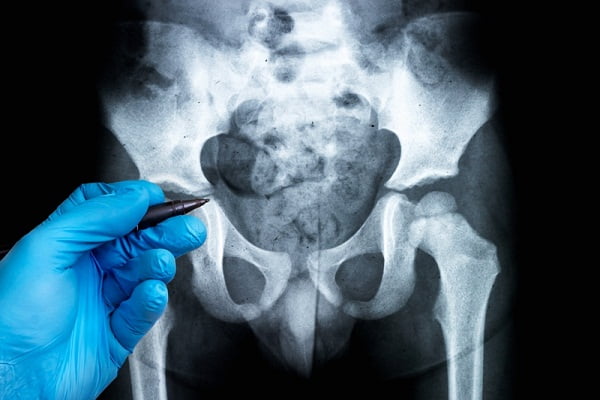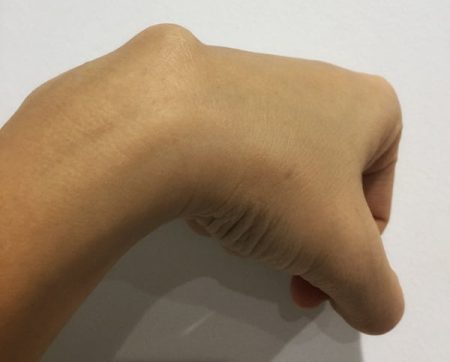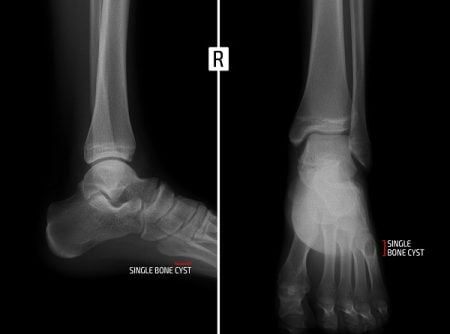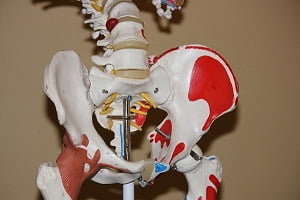
What is bone cyst?
A bone cyst is a hollow structure that develops inside a bone typically filled with pus, semisolid, or gaseous material. It is very much similar to a blister. It occurs mostly in children and young adults.
A bone cyst does not usually show any symptoms in the beginning. They are not cancerous and are not usually considered serious health issues.However, problems may occur when a cyst size becomes large. The increased size may weaken the bone, making it more prone to fracture. This can lead to various symptoms such as pain, swelling, and inability to move or put extra weight on a body part.
More: Bone Cyst: Types, Symptoms, Causes, Diagnosis, Treatment, Surgery
What is pelvis?
The pelvis is the lower part of the body, located between the abdomen and the legs. It provides support to the intestines and also contains the bladder and reproductive organs.
There are several structural differences between the female and the male pelvis. The female pelvis is generally broader and wider than the male pelvis as it provides enough space for a baby to develop and pass through the birth canal during parturition.
Anatomy of pelvic bones
The human pelvis is a group of bones fused together. The hip bones together with the sacrum and coccyx forms the bony pelvis.
Hip bones
There are two hip bones. Together, they form the pelvic girdle. The hip bones join to the upper part of the body’s skeleton at the sacrum. Each hip bone is made from fusion of three smaller bones during adolescence.
Ilium
It is the largest part of the hip bone which is broad and fan-shaped.
Pubis
It is the front part of the hip bone and lies close to the genitals. Two pubes connect to one another at a joint called the pubis symphysis
Ischium
It is also known as “sit bones” as when you sit down, most of the body weight falls on these bones.
The ilium, pubis, and ischium of each hip bone come together to form the cup shaped socket of the hip joint known as acetabulum, where the head of the thigh bone (femur) attaches.
Sacrum
The sacrum is connected to the lower part of the vertebral column. It is made up of five vertebrae that are fused together. It is quite thick and helps to support the body weight.
Coccyx
It is connected to the bottom of the sacrum and is supported by various ligaments. It is triangular in shape and is formed from the fusion of four vertebrae. It is referred to as tail bone.
More: Bone cyst on foot or ankle
More: Bone cyst on hip joint
How do cysts develop on pelvic bone?
Cysts can develop in pelvic bones like in another bone of the human body. The exact cause of cyst formation in pelvic bones is unknown; however certain theories try to highlight the process of their development. Some of them are listed below:
Types of pelvic bone cysts
There are two main types of pelvic bone cysts.
Unicameral bone cysts
These are also referred to as simple bone cysts, and are relatively common bone lesions that usually occur in the femur or humerus in the developing skeleton.
It is very rare that a unicameral bone cyst may form in the pelvis. Thus, lesions in the pelvis are often misdiagnosed and over treated.
Aneurysmal bone cyst
These cysts have an ability to grow anywhere in the body. However, most cysts develop inside the thigh bone, lower leg or upper arm or the vertebral column (in the spine). They are not cancerous, but they can grow quickly and disrupt the normal functioning of the affected bone.
Aneurysmal bone cysts of the pelvis and sacrum are usually malignant lesions associated with s bone destruction, fractures, and local recurrence.
Treating cysts of the pelvic bone
Usually, bone cysts heal naturally without treatment. However, treatment of pelvic bone cysts is sometimes necessary if the cyst is painful or to prevent fracturing of the bones.
Currently available suitable treatment options for pelvic bone cysts are:
Selective arterial embolization
It is a procedure in which small pieces of a special gelatin, or other material, is injected through a catheter to clog the main blood vessel. As a result, the cyst shrinks due to the lack of oxygen-carrying blood and other substances required for its growth. This treatment is suitable before an operation to make the surgery easier.
Bone grafting
In this procedure, a surgeon cuts into the bone. The fluid inside the cyst is drained out and the lining of the cyst is scraped out using a tool called a curette. The cavity formed inside the bone is then filled with chips of bones, either from other parts of the body or from donated bone tissues.






